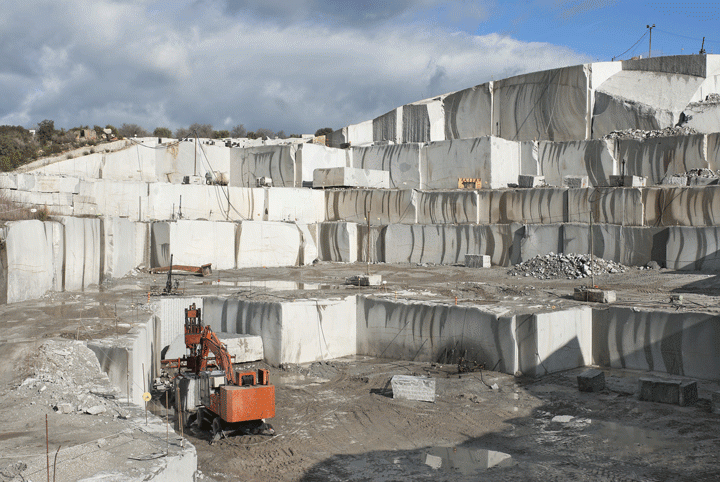Uncovering the Rich Background and Sustainable Practices of Granite Quarrying
As we depend on the precipice of discovering the complex tapestry of granite quarrying, a journey through time discloses not just the physical act of extracting stone but additionally the cultural and historic importance woven right into the extremely textile of this practice. From the old origins that laid the foundation for modern-day quarrying techniques to the lasting techniques that are forming the future of this sector, each sculpt mark on granite surface areas narrates waiting to be discovered (granite quarries in south africa). The legacy of granite quarrying stretches much past plain removal; it is a testament to human resourcefulness, resilience, and the long-lasting allure of this majestic stone
Ancient Beginnings of Granite Quarrying
Going back to ancient worlds, the technique of quarrying granite has been an indispensable component of human history and building advancement. The earliest evidence of granite quarrying go back to ancient Egypt, where enormous pyramids and elaborate sculptures were crafted from this sturdy stone. The Egyptians used primitive devices to remove granite blocks from quarries, showcasing the significance of this product in their huge constructions.
Moving ahead in history, the Greeks likewise made considerable payments to the quarrying of granite. The Greeks utilized granite in numerous architectural marvels, such as temples and sculptures, demonstrating their ability in shaping and sculpting this sturdy stone. The Romans even more fine-tuned the methods of quarrying granite, employing advanced tools like chisels and hammers to essence and form granite for their iconic structures.
Through the centuries, the practice of quarrying granite has actually developed, with contemporary innovations enhancing effectiveness while keeping the ageless appeal of this all-natural rock - granite quarries in south africa. From ancient worlds to contemporary builders, the legacy of granite quarrying proceeds to form our globe
Evolution of Quarrying Techniques
The advancement of quarrying methods has actually been marked by a continuous development towards better efficiency and accuracy in drawing out granite. Early quarrying methods involved hands-on labor with standard tools such as chisels, hammers, and wedges to draw out granite blocks from the planet.
In even more current times, the introduction of machinery revolutionized the quarrying market, making it possible for faster extraction rates and raised productivity. Technologies such as diamond cord saws, high-pressure water jets, and pneumatic drills have become conventional in modern-day quarries, permitting exact cutting and minimized waste. Moreover, improvements in computer-controlled tools and 3D modeling have actually optimized quarrying operations, causing marginal ecological influence and improved sustainability methods. As the demand for granite remains to rise, the advancement of quarrying strategies remains important to meeting market needs effectively and sustainably.
Cultural Value of Granite
Granite visit site holds an extensive social significance across various people due to its enduring existence in building work of arts and revered monuments. The social significance of granite prolongs past its physical characteristics; it personifies resilience, stability, and timelessness, making it a sign of withstanding traditions and practices.

Lasting Practices in Quarrying
Amidst the abundant history of granite quarrying and its social importance exists an expanding focus on lasting practices within the market. As ecological recognition and concerns regarding source depletion have increased worldwide, the quarrying industry has actually significantly embraced sustainable methods to decrease its influence on the environment and surrounding communities.

Additionally, improvement and recovery of quarry websites post-extraction are integral to lasting techniques. By bring back quarried areas to an all-natural or valuable state, such as producing wild animals habitats or entertainment spaces, quarriers can counter the environmental impact of their procedures and contribute positively to the neighborhood community.
Tradition of Granite Quarrying
With a historic background steeped in craftsmanship and commercial progress, what enduring impact has granite quarrying left on the landscape of modern society? The legacy of granite quarrying goes beyond plain removal techniques; it has actually formed building wonders, city landscapes, and social heritage worldwide. The durable nature of granite has actually made it a recommended selection for monuments, buildings, and facilities, standing as a testament to the skill and artistry of quarry employees throughout generations.
Moreover, the financial impact of granite quarrying can not be forgotten. The sector remains to give work opportunities and drive regional economies in regions where granite removal is click this common. It has also spurred technical advancements in quarrying methods and equipment, resulting in a lot more effective and sustainable practices.
In regards to sustainability, the heritage of granite quarrying consists of initiatives to alleviate environmental influences through improvement jobs and liable resource administration. By balancing economic rate of interests with environmental stewardship, the market strives to make sure that future generations can remain to take advantage of this long-lasting natural resource.
Final Thought
